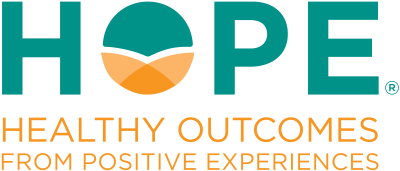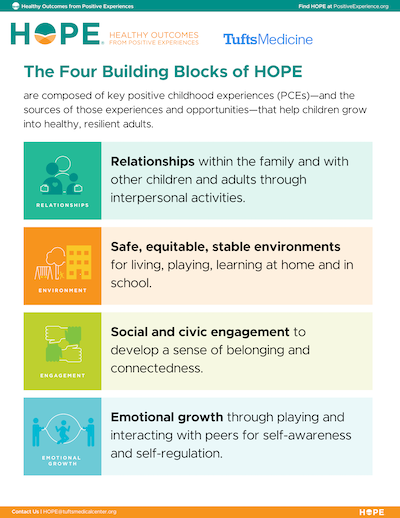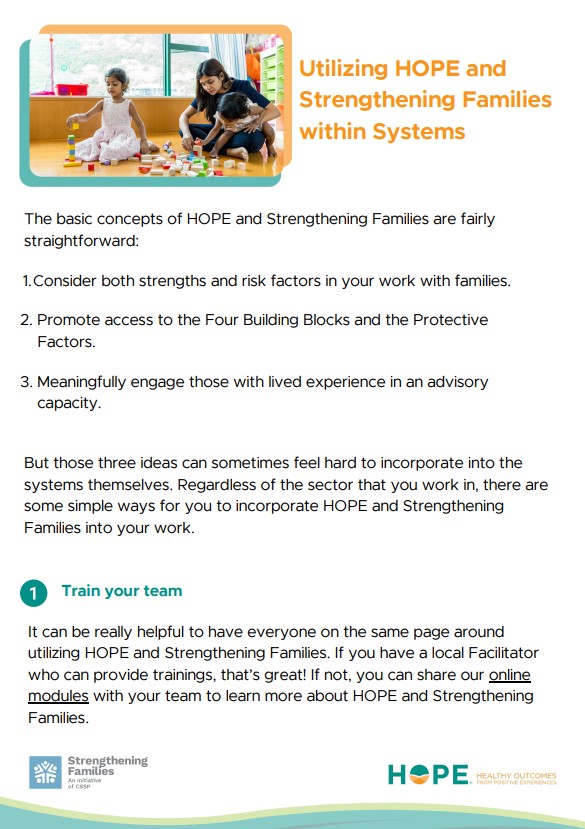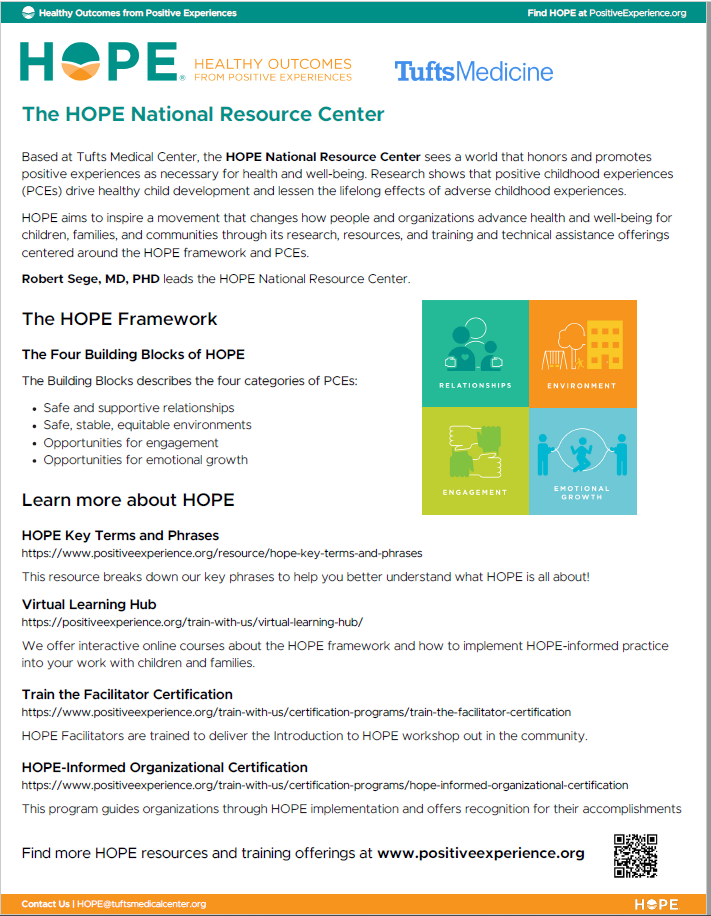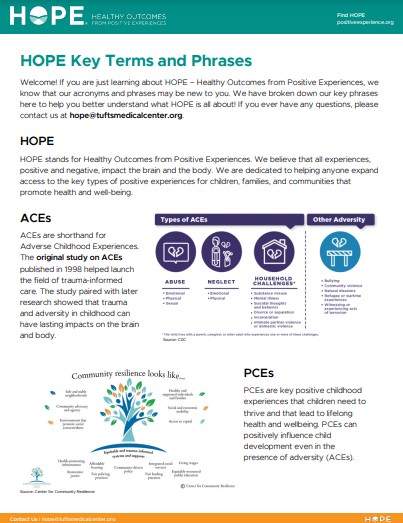
Learn what resources people are using to help them practice HOPE
The HOPE framework, grounded in research that shows all children need positive childhood experiences (PCEs) to thrive, centers around the four key types of PCEs we call the Four Building Blocks of HOPE. It is a flexible framework that professionals and organizations can use to create positive changes in their unique communities.
The HOPE National Resource Center regularly releases and updates resources, often collaborating with our partner organizations, HOPE trainers, and community members. These partnerships allow us to learn about the diverse needs of communities, gather input from people with lived experiences, and address how HOPE can help them through PCEs.
All of our resources are widely accessible and completely free to download on our website.
Whether you are just starting your HOPE journey or looking to expand HOPE further in your practice, check out our resources! This blog highlights our top 5 popular resources. Learn about the Four Building Blocks of HOPE, HOPE and Strengthening Families, commonly used terms, and how to share HOPE with your community or organization’s leadership.
1. Four Building Blocks of HOPE handout
Research shows that PCEs help children grow into healthy, resilient adults. The HOPE framework centers around the Four Building Blocks of HOPE:
- Relationships: safe and supportive relationships within the family and with other children and adults.
- Environment: safe, equitable, and stable environments where children can live, learn, and play.
- Engagement: opportunities for social and civic engagement to develop a sense of belonging and connectedness.
- Emotional Growth: opportunities for emotional growth where children feel supported through difficult events and emotions.
This handout details each Building Block and shares examples of how you can promote access to them for children and families in your community.
2. Utilizing HOPE and Strengthening Families within systems
This resource emphasizes the practical application of HOPE and Strengthening Families frameworks within various systems. There are straightforward ways for professionals across different sectors to implement these two frameworks effectively in their work, including:
- Training team members on strengths-based practices
- Reviewing intake and assessment forms
- Examining organizational policies
- Engaging with those with lived experiences
This resource was created in partnership with CSSP and the National Association of County and City Health Officials.
3. HOPE Pagers
These pagers provide a quick and digestible summary about the HOPE National Resource Center and the work we do with PCEs.
The one-pager shares:
- Mission of the HOPE National Resource Center
- The HOPE framework and Four Building Blocks of HOPE
- Key resources and training opportunities offered by the HOPE NRC
The two-pager shares:
- Mission of the HOPE National Resource Center
- The HOPE framework and the importance of positive childhood experiences
- Putting the HOPE framework into practice
- How the HOPE National Resource Center is creating a HOPE-Informed movement
- Ways to contact the HOPE National Resource Center
4. HOPE Key Terms and Phrases
If you are just learning about the HOPE framework, this resource is meant to help with any acronyms and phrases that may be new to you. We have broken down our key phrases here to help you better understand what HOPE is all about.
5. Promoting Resilience for Systems-Impacted Families
The Four Building Blocks of HOPE and Strengthening Families’ five Protective Factors create opportunities for families to break intergenerational cycles of systems-involvement and increase the likelihood that children, youth, and families will thrive.
This resource shares how professionals working with families in child welfare or juvenile justice systems can promote PCEs through these two frameworks.
This resource was also created in partnership with CSSP and the National Association of County and City Health Officials.
Learn more about how to use the HOPE framework
Want to learn more about the HOPE framework? Explore our website for our latest resources, research, and training opportunities.
